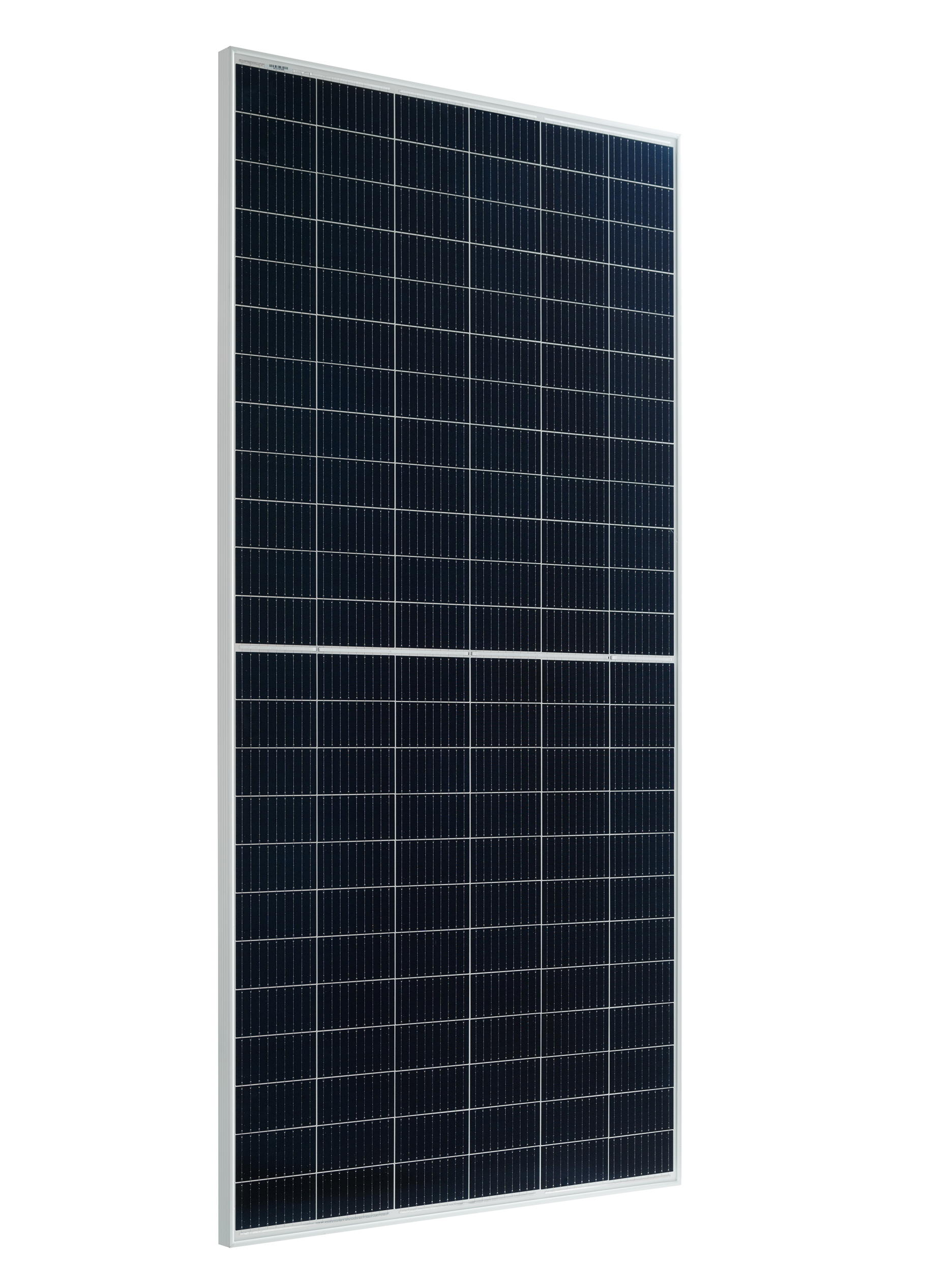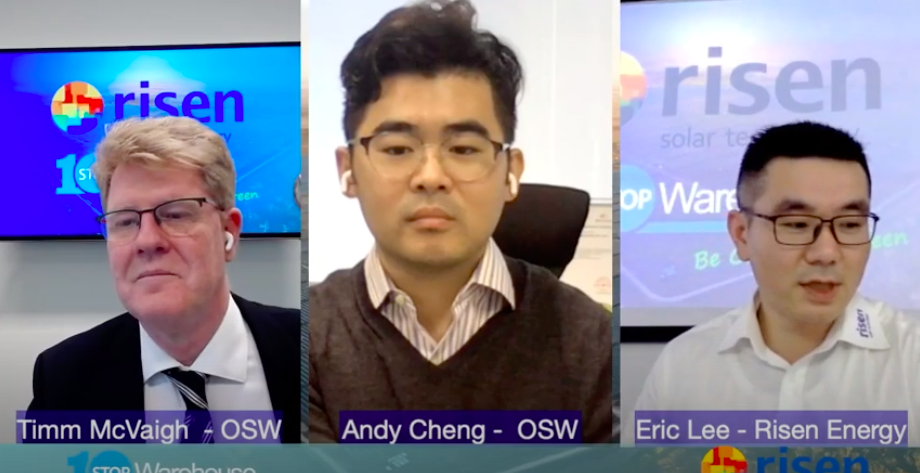In a deal signed last week, Risen Australia will supply 150 MW of modules to distributor One Stop Warehouse (OSW) over the 2020/21 financial year. The deal is an increase on 100 MW the previous financial year and will cover both of Risen’s new modules, the XX W large-format Titan and its 435 W Sieger – which utilizes HJT cells.
The deal includes an exclusive distribution agreement for Risen’s 370W Jaegar module, which utilizes mono PERC cells. However, it is the HJT Sieger that is “really exciting,” says OSW product manager Leo Ye.
Ye will be presenting at a pv magazine Australia webinar on both the Titan and the Sieger series modules tomorrow. Risen Energy chief scientist and head of cell R&D Yimao Wan will also be presenting. Wan completed his PhD at the Australian National University, where he went on to continue his work on cell passivation as a research fellow. Register for free here.
The distribution agreement between Risen OSW was signed June 22 and formally announced the following week. It is the largest agreement between Risen and One Stop Warehouse. With Covid-19 travel restrictions in place, the signing was held in an online ceremony.
During the online ceremony, Andy Cheng, procurement director for OSW, said that over the past two years that Risen had growth to become “one of the most popular products in the Australian market.” He said he was looking forward to distributing both the Jaegar and Jaegar+, but also the “new M12 product [Titan] and HJT [Sieger] products.”
Eric Lee, the general manager of Risen Energy Australia noted that the company had achieved 100 MW of modules sales to the rooftop market segment over the past year in Australia. “Moving forward, Risen will continue to supply OSW with our high technology products,” said Lee.

Made in China HJT
HJT technology itself is nothing new, with Sanyo and then Panasonic having developed and produced the high efficiency technology over decades. However, it has remained a high-performance and high-cost product – limiting its mass-market penetration. Given the Chinese PV industry’s historic ability to aggressively drive down costs, often in partnership with Australian research knowhow, the emergence of “Made in China” HJT is encouraging.
“Risen will use this HJT technology and enter mass production,” says OSW’s Leo Ye. They can achieve volume and drive down the price, which is good for the whole industry.
“I graduated from the UNSW, in solar. I used to work for panel manufacturers in China, and until now the [cell] technology didn’t change that much – there was efficiency improvements, but not the technology… it was mainly screen-printed poly or mono. But in the past two years we have seen the wafer size evolving and now the technology change from the typical screen printing to HJT or TOPCon – and that is really exciting.”
At present, Risen’s HJT Sieger boasts a module efficiency of 21.4% – which, while not world beating, places it firmly in the high-efficiency basket. In a 144 HC-cell configuration it achieves a nameplate power output of 415-435Wp. However, the advantages of HJT go beyond pure efficiency.
“For HJT technology, the temperature coefficient is one of the key features,” says OSW’s Ye. “In Australia, the summer temperatures will reach 40C+ or even 50C and over. Compared to the traditional panel with a temperature coefficient -0.4% and above, with HJT it is only around -0.23 or -0.24% – that is very low coefficient! If the ambient temperature reaches 50C then there is almost half the degradation that the traditional panels.”
In terms of long-term performance, by virtue of being an n-type technology, Risen’s HJT is also Performance Induced Degradation (PID) free and demonstrates limited initial Light Induced Degradation (LID). The Sieger will be supplied with a 12-year product warranty and 30-year linear power warranty, covering annual degradation of 0.45%. “When you have this technology, it will give more confidence to the market,” says Ye.
In terms of the competitive landscape, the Sieger will likely compete directly with high efficiency products from suppliers such as LG NeOn series and SunPower’s Performance Series. A notable HJT competitor comes in the form of Singapore-based producer REC, which is introducing its Alpha series. The Alpha was recently announced as a 2020 Intersolar award winner and utilizes Meyer Burger HJT and Smartwire technology.
Register free to the pv magazine Australia webinar on both the Titan and Sieger module series and here from the technology experts here.
This content is protected by copyright and may not be reused. If you want to cooperate with us and would like to reuse some of our content, please contact: editors@pv-magazine.com.









By submitting this form you agree to pv magazine using your data for the purposes of publishing your comment.
Your personal data will only be disclosed or otherwise transmitted to third parties for the purposes of spam filtering or if this is necessary for technical maintenance of the website. Any other transfer to third parties will not take place unless this is justified on the basis of applicable data protection regulations or if pv magazine is legally obliged to do so.
You may revoke this consent at any time with effect for the future, in which case your personal data will be deleted immediately. Otherwise, your data will be deleted if pv magazine has processed your request or the purpose of data storage is fulfilled.
Further information on data privacy can be found in our Data Protection Policy.